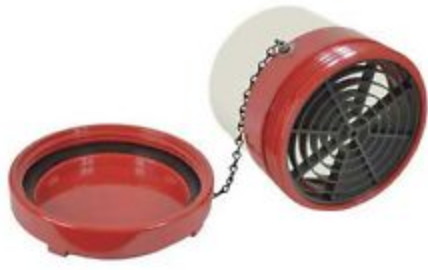Emergency Water Supply
Town of Nederland and Areas of Unincorporated Boulder County

The adopted fire code (International Fire Code 2018) requires every structure have adequate emergency water supply based on fire flow duration and the size of the home or structures to be protected. Most areas in the Town of Nederland meet this requirement with the hydrant system, as long as the hydrant is within the required distance from the home. In other areas this requirement can be met by installing a local cistern or making a contribution to the Community Cistern Fund.
If your building site is located in a remote area, or in an area with poor access to a water supply for firefighting, the Fire District may require you to install a local cistern.
In other cases it is permissible to either install a local cistern or contribute to the Fire Department's Community Cistern Fund, at the developer's discretion. Each option has its own pros and cons. If you choose to install a cistern it cannot be used for livestock, agricultural, domestic storage or other uses.
Here are the cistern size and/or Community Cistern Fund contribution requirements:

On June 1, 2023, the NFPD Board of Directors approved using NFPA 1142 to determine fire flow duration, and to allow those requirements to match the cistern size requirements for the District.
NFPA 1142 - Calculating Minimum Water Supplies in Rural/Suburban Areas

WSmin = minimum water supply in gallons
VStot = total volume of structure in ft3 (sq footage x 10 for use in NFPD)
OHC = occupancy hazard classification number
CC = construction classification number
1.5 = exposures factor required for NFPD
Example, 1,575sqft residence:
WSmin = [(1,575 x 10)/7](1.5) = 3,375 gallons
Some thoughts to consider:
1) Do you have physical room to place the cistern approximately 50-75 feet from your house and garage? Too close and the Fire Department cannot use it if the house is on fire, and too far and our initial attack lines will not reach all of the house. Our pre-connected hose lines are 200' and optimally need to reach the rear, basement, or top floor of the house without adding additional hose. The access requirements state the distance from the fire engine to the far side of the structure shall be 150' or less. Cistern placement is vital to a successful initial fire attack.

Local cistern shall have approved fittings for connection. NFPD uses 6" NH Male with a strainer and cap. Most cistern suppliers are familiar with these requirements and where to obtain the fittings. The cistern will also need an appropriately sized vent and fill, ensure the vent is covered with wire mesh or a similar protective covering.
2) Is there adequate space for an all weather turnaround or pullout adjacent to the cistern?
3) Generally, the cost to install a 7,000 gallon cistern is roughly equal to the $15,000 donation to the community cistern fund. If blasting is required to get adequeate burial depth (at least 4 feet of dirt on top of the tank) the cost to install a local cistern may be significantly higher.
4) The Fire District will prioritize which locations will receive community cisterns. It is likely that the money you contribute towards the cistern fund will not result in a community cistern directly in the area you are building. The placement is based on existing infrastructure, WUI impact, access, and risk, amongst other considerations.
Click here for the Boulder County Emergency Water Supply for Firefighting requirements.

